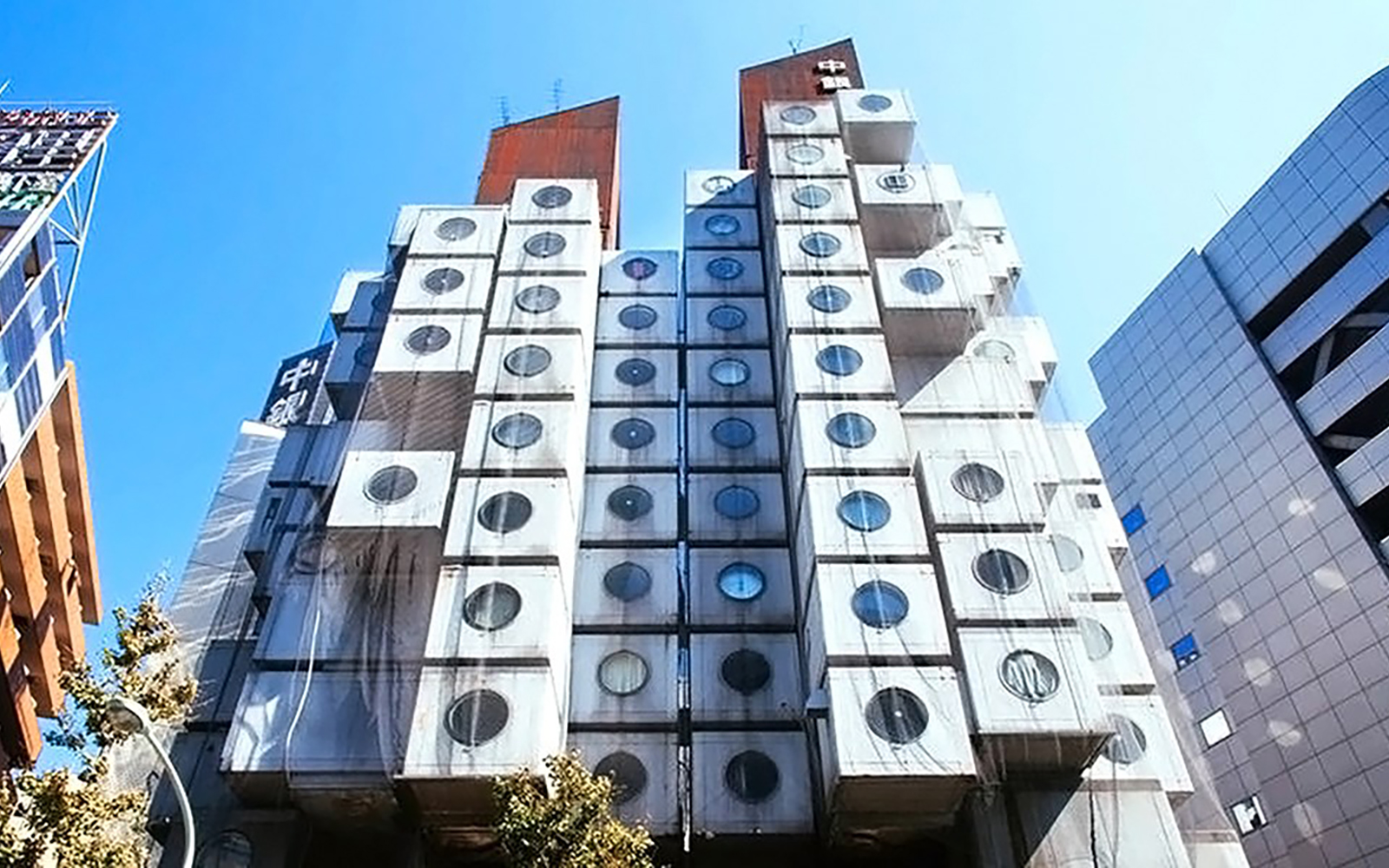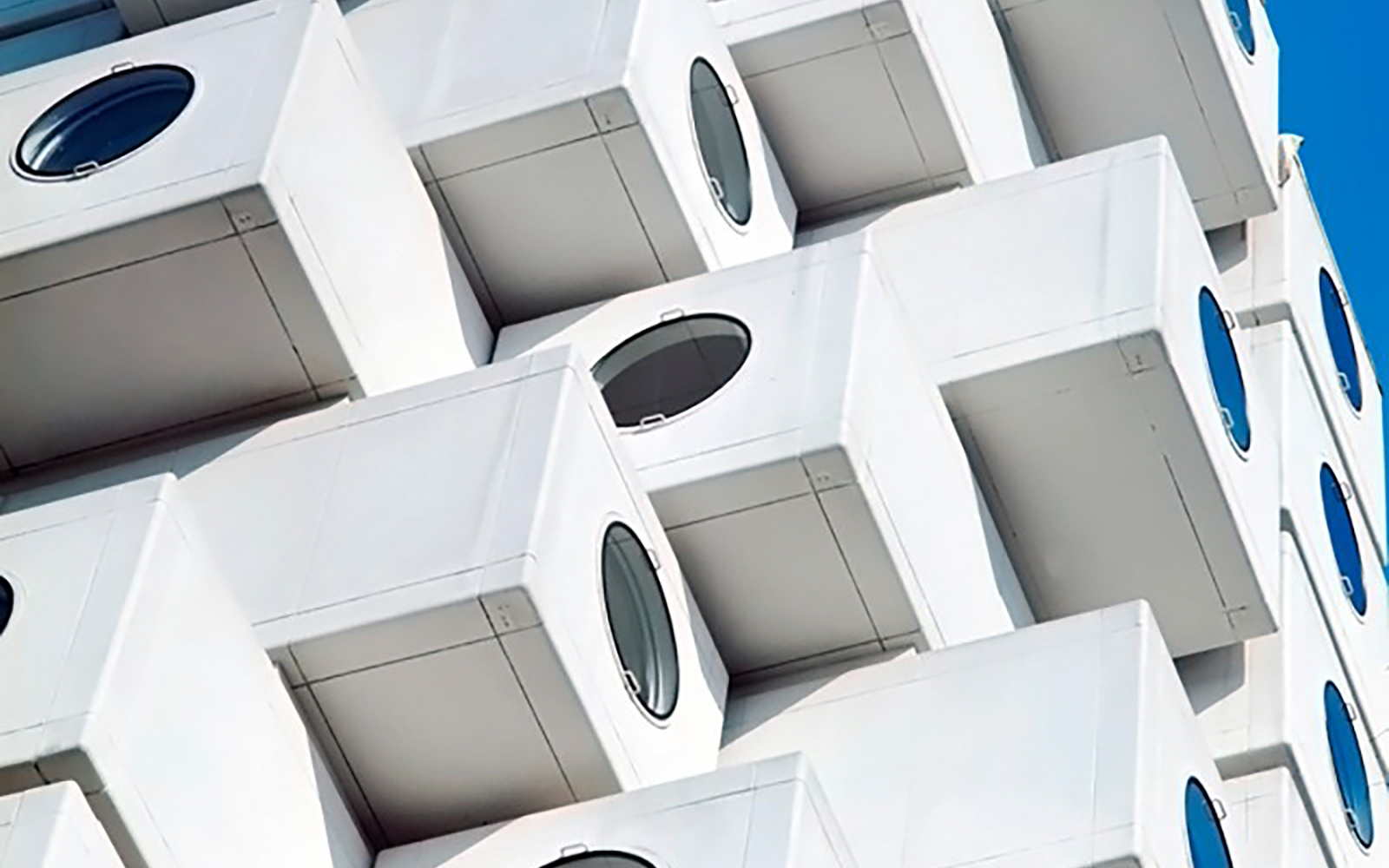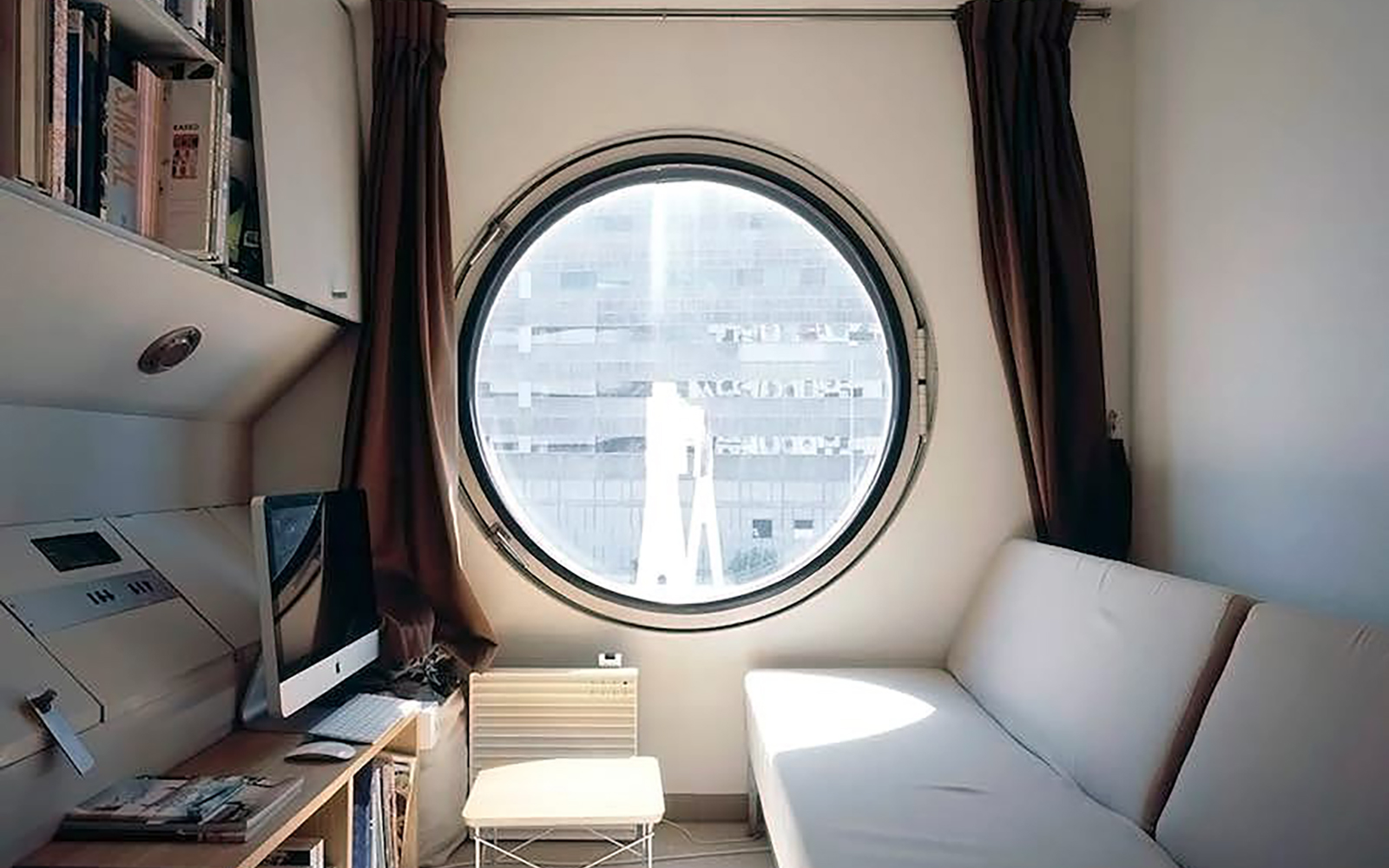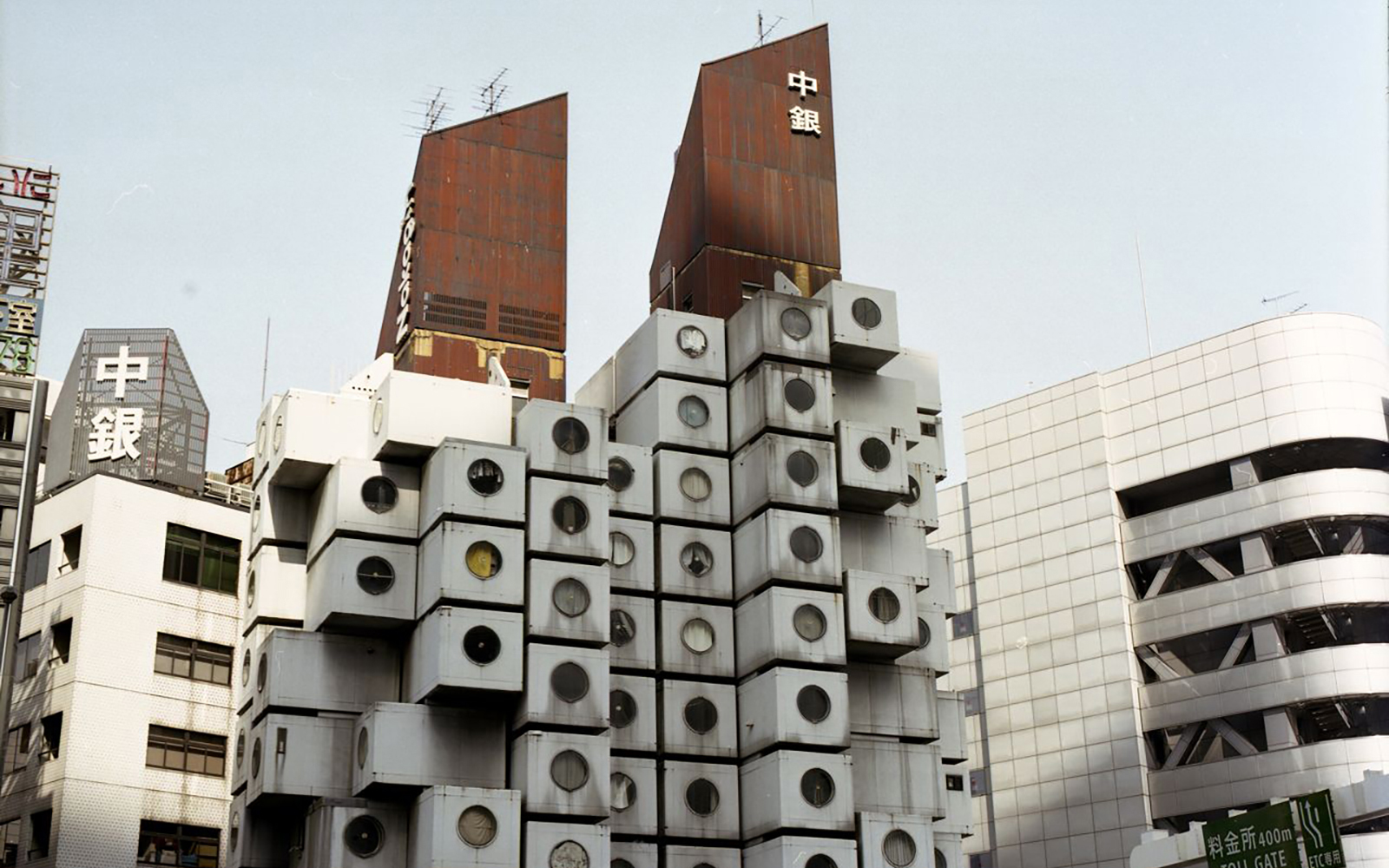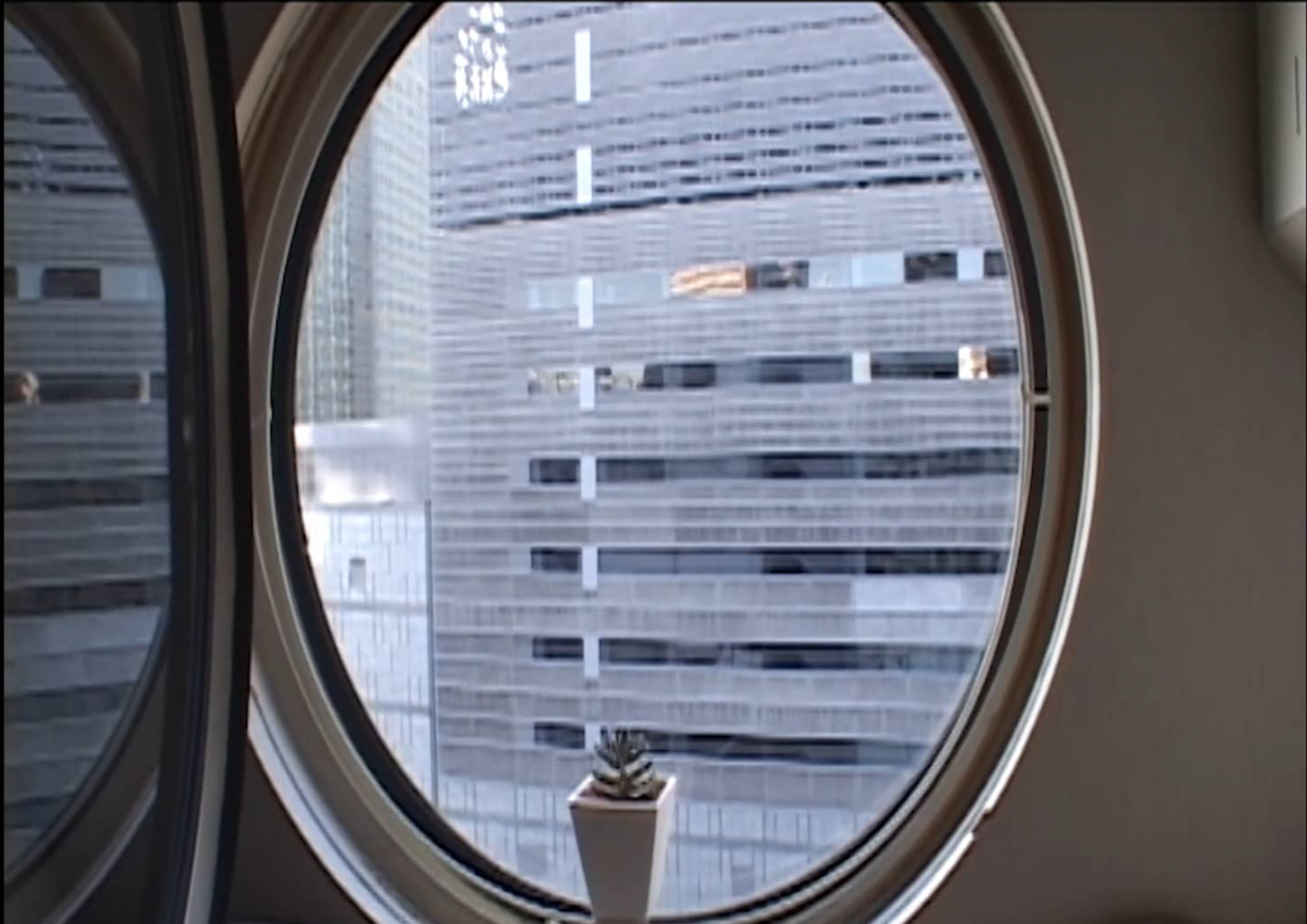Nakagin Capsule Tower
Architect: Kisho Kurokawa Architect & Associates
Year of completion: 1972
Location: Tokyo, Japan
Demolished in 2022
Latest update 13 December 2024
Nakagin Capsule Tower
The Nakagin Capsule Tower Building, designed by the late Kisho Kurokawa (1934-2007), is a representative work of the Japanese architectural movement called 'Metabolism'. It was built with the idea that by replacing capsules, the building would carry out a form of metabolism; however, in the succeeding 46 years, no capsules were ever replaced.
The building is comprised of two interconnected concrete towers, to which 140 capsule apartments were individually connected by high-tension bolts so that they could be easily replaced as they aged, putting into practice the Metabolist idea that buildings should be renewable.
Latest News
Dezeen, 9 December 2024
Luxury hotel set to be built on Nakagin Capsule Tower site
Today, the Nakagin Capsule Tower is a sad shadow of its formerly futuristic self.
Trailer of the documentary Nakagin Capsule Tower - Japanese Metabolist Landmark on the Edge of Destruction (1:30). Uploaded by Michael Blackwoods Productions.
Architectural Highlights
The building was conceived as two towers with 144 detachable and replaceable capsules (prefabricated off site) which could be used as studios or as residences. Each capsule mirrored the structure and scale of a shipping container (7.5 x 12.5 x 7 feet/lightweight steel frame with reinforced steel panels) but with a porthole window in Plexiglas of 4.5 ft diameter. Interiors were fitted out with a bed, a bathroom unit and various appliances including a colour tv and a desk calculator. The cost in 1972 was equivalent to that of a luxury car.
'The Nakagin Capsule Tower represents a significant historical moment in post-war architecture. Its design embodies the Metabolists’ urban and social ideals: a city of mobility and flexibility, and a system adapted to the needs of a fast-paced, constantly changing society. The building celebrates the idea of interchangeability and flexibility through the capsule, and its history reflects the rise and fall of Metabolism’s technological utopias and the transformation of Japan’s urban culture since the early 1970s. The Tower thus stands as a living fossil offering a comprehensive lesson in the success and failure of post-war avant-gardes.' (Zhongjie Lin (2011) ‘Nakagin Capsule Tower: Revisiting the Future
of the Recent Past’, Journal of Architectural Education, 65:1, 13-32).
Longer fragment from documentary Nakagin Capsule Tower. Uploaded by Milano Design Festival. (3:29)
Icon for Tokyo
Thanks to its unique external appearance and concept, the building was highly acclaimed not only in Japan, but also in the rest of the world. It is frequently mentioned in travel guides published abroad, such as Lonely Planet, and often appears in various media - such that it has become a well-established tourist spot visited by many foreign visitors. English guided tours of the capsules operated by Showcase Tokyo are also popular, with approximately 100 people per month participating in them. The Ministry of Economy, Trade and Industry and the Tokyo metropolitan government have included images of the Nakagin Capsule Tower Building in their videos introducing the city abroad.
Nakagin: 140 plug n' play capsules float in metabolist tower. Uploaded by Kirsten Dirksen/Faircompanies.com (11:48).
Threat
Today, the Nakagin Capsule Tower is a sad shadow of its formerly futuristic self. About 30 of the 140 apartments have been abandoned, some uninhabitable because of leaks and mildew. Its structure is asbestos-ridden, threatened with demolition, and covered with a sad-looking net to protect pedestrians against falling debris.
At the December, 2017 general meeting of the building's management association, The Nakagin Capsule Tower Preservation and Restoration Project got advice from the designer of the current build-ings, Kisho Kurokawa Architect & Associates and together with archi-tectural office bews/building environment workshop, proposed a plan for capsule replacement. Multiple initial consultations regarding the replacement of capsules were held with the Chuo Ward Urban Devel-opment Division, and although issues remain, a promising response was received from the relevant authorities regarding the possibility of realizing the plan.
Source: Change.org
News Archive
Dezeen, 29 April 2022
Footage reveals dismantling of Nakagin Capsule Tower in Tokyo
ArchDaily, 4 April 2022
Nakagin Capsule Tower to be Demolished Mid-April
Nikkei Asian Review, 28 April 2020
Fate of Tokyo's original capsule tower hangs in balance
Literature

Nakagin Capsule Tower
Norita Minami
2015
Buy the book
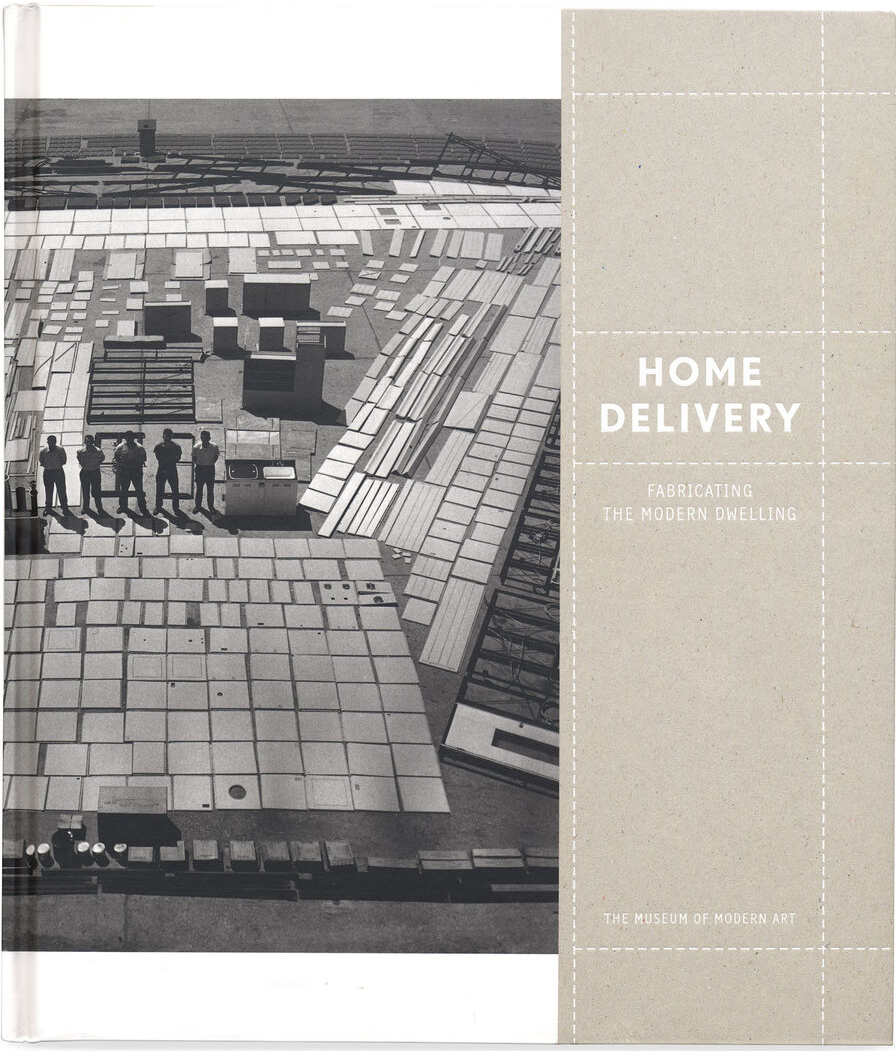
Home Delivery: Fabricating the Modern Dwelling
Museum of Modern Art, New York
Barry Bergdoll, Peter Christensen, Peter Hewitt Christensen, Ken Oshima
2008
Buy the book
Nakagin Capsule Tower
Kisho Kurokawa Architect & Ass.
1972, Japan
